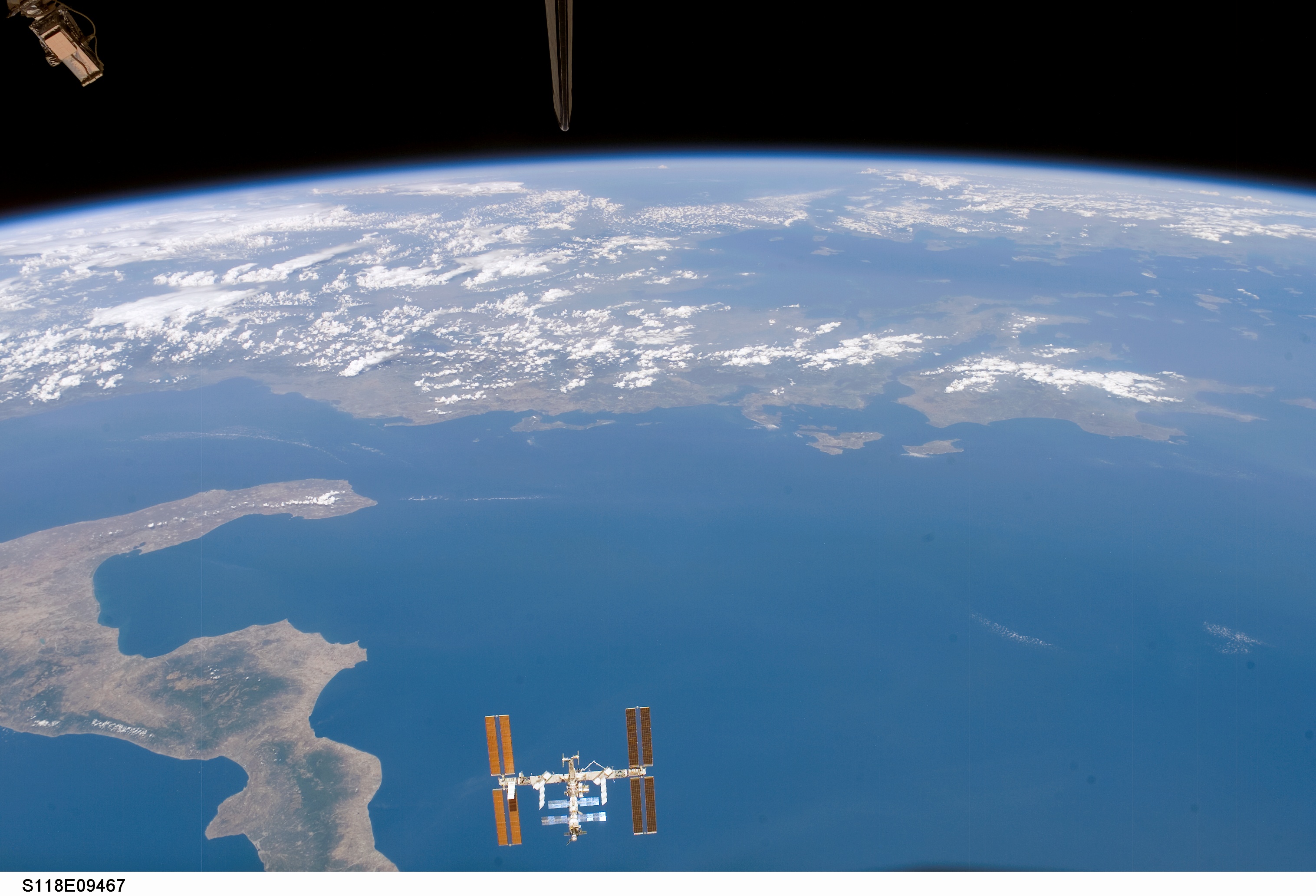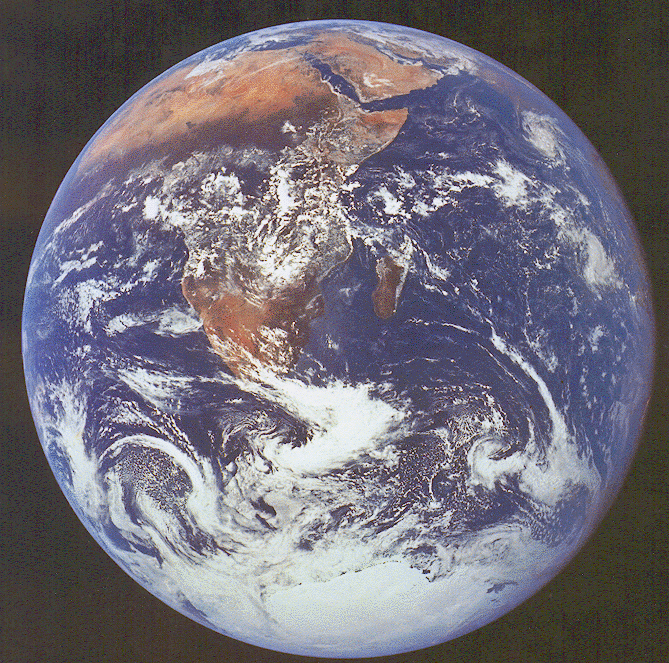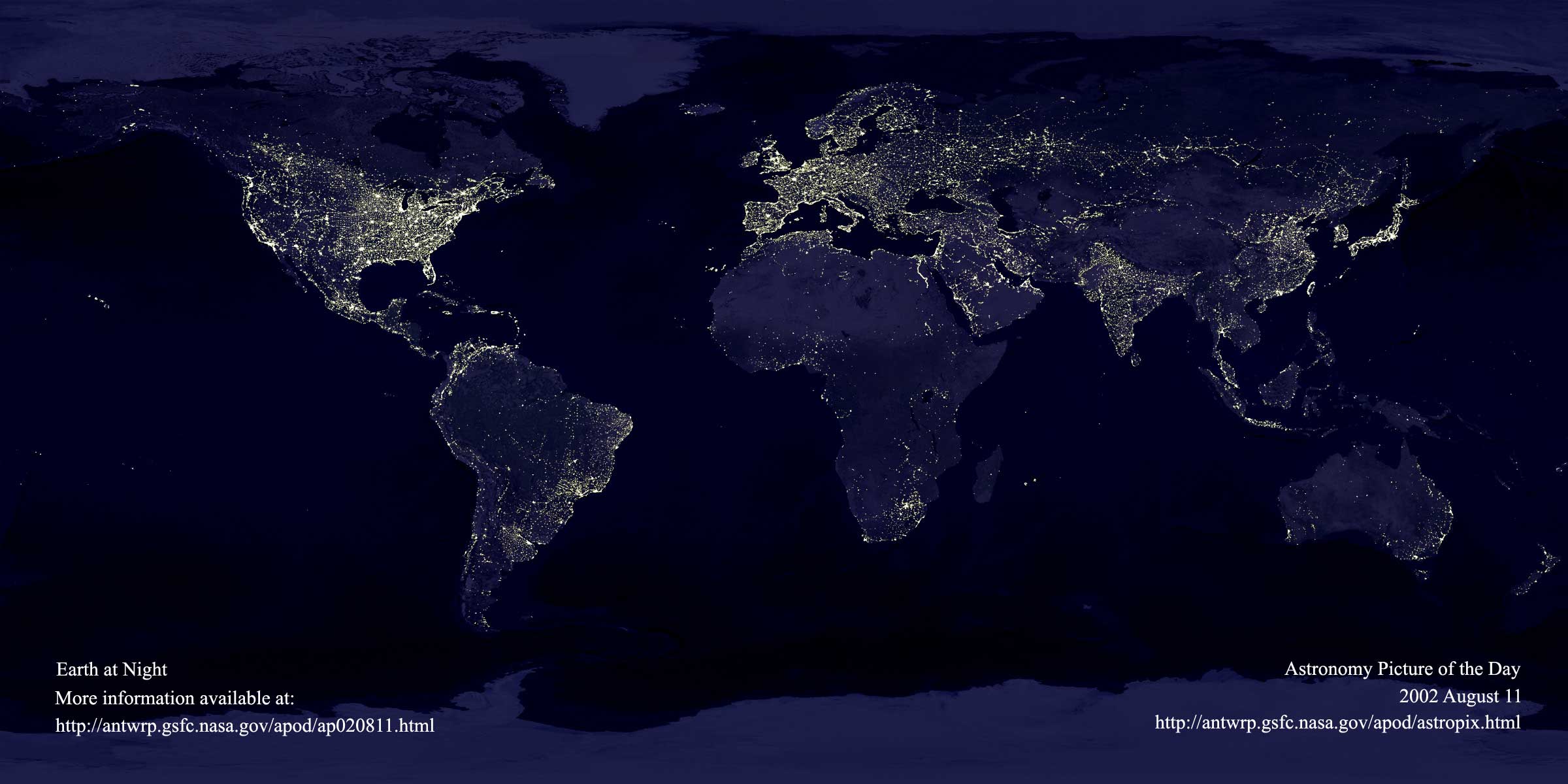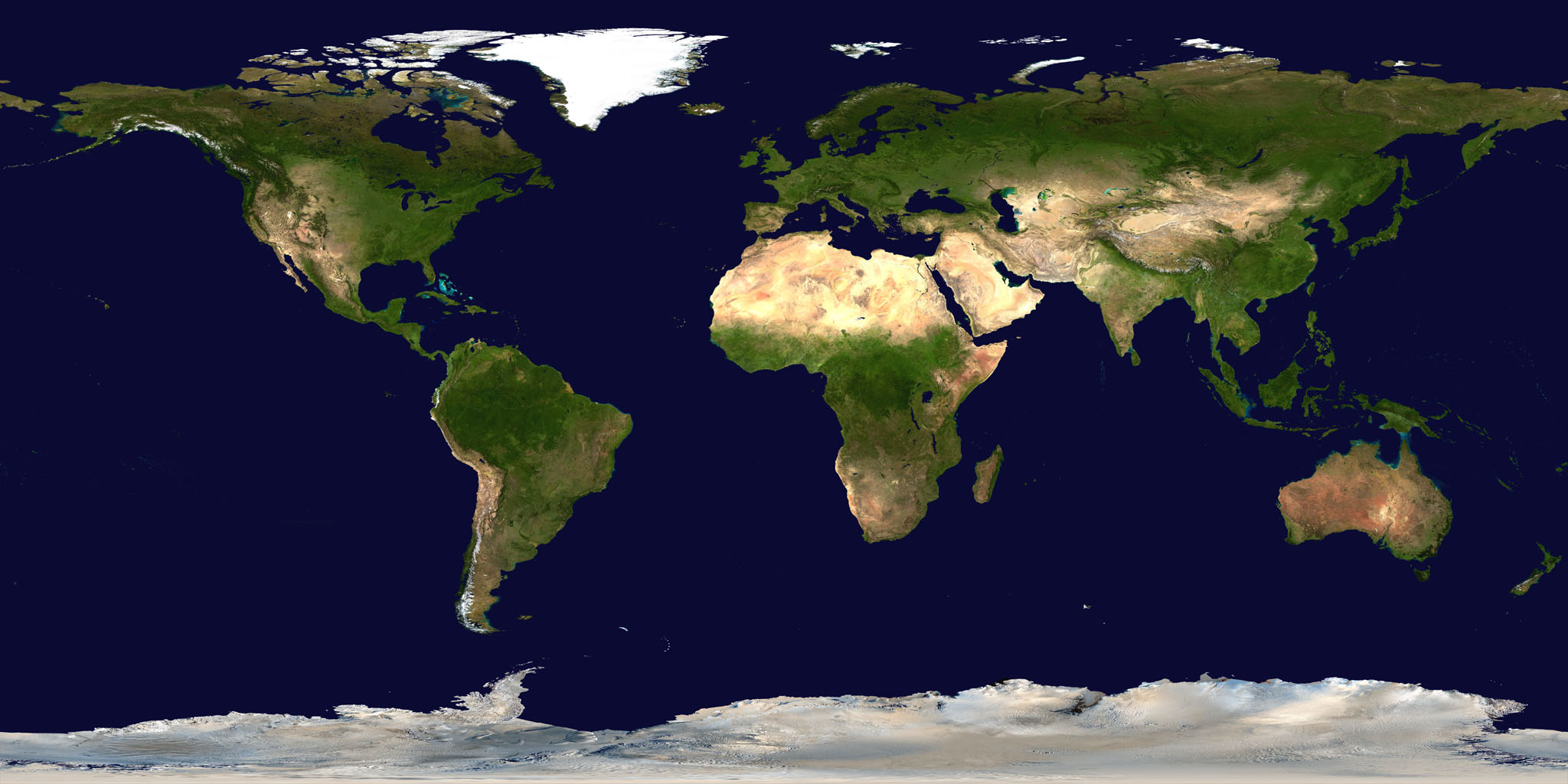
Space and Space Travel News
Re: Space and Space Travel News

 » Web Search: Images of the International Space Station
» Web Search: Images of the International Space StationInt. Space Station Launches 10th Anniversary with 2008 Calendar
Houston, U.S. (NASA) - When did the U.S. launch its first satellite? What day did the first crew arrive at the International Space Station?
A new calendar that highlights 50 years of NASA milestones and a decade of station assembly can be downloaded at: http://www.nasa.gov/station
The colorful 2008 calendar is packed with historical tidbits and photographs that capture the work and wonder of a decade building the world's
largest orbiting laboratory. Each month of the calendar has a specific theme with images, photographs, significant NASA historical events and
Web sites for educators. (more...)
___
Just in time for its 10th anniversary, the space station will get a delivery via space shuttle Endeavour that might win a prize for out-of-this-world
home... More: www.nasa.gov/126_payload.html
» RIA Novosti, Russia: Space Station marks its 10th anniversary
» Global Media Coverage: Space Stations 10th Anniversary
Re: Space and Space Travel News
Earthrise 1966 - The World's First View of Earth Released to the Public
First Image of the Earth from the Moon
APOD, Earthobservatory.nasa.gov
Moffett Field, Calif. -- NASA released a newly restored 42-year-old image of Earth on Thursday. The Lunar Orbiter 1 spacecraft took the
iconic photograph of Earth rising above the lunar surface in 1966. Using refurbished machinery and modern digital technology, NASA produced the
image at a much higher resolution than was possible when it was originally taken. The data may help the next generation of explorers as NASA
prepares to return to the Moon.
The world's first view of Earth released to the public was taken by a spacecraft from the vicinity of the Moon. The photo was transmitted to
Earth by the U.S. Lunar Orbiter I and received at the NASA tracking station at Robledo De Chavela near Madrid, Spain. This crescent of the
Earth was photographed August 23, 1966 at 16:35 (GMT) when the spacecraft was on its 16th orbit and just about to pass behind the Moon
In the late 1960s, NASA sent five Lunar Orbiter missions to photograph the surface of the moon and gain a better understanding of the lunar
environment in advance of the Apollo program. Data were recorded on large magnetic tapes and transferred to photographic film for scientific
analysis. When these images were first retrieved from lunar orbit, only a portion of their true resolution was available because of the limited
technology available. » NASA: The world's first view of Earth » Photo Credit: NASA/LOIRP » Earthrise Photo made by the Apollo 8 Crew


» APOD: Moonquakes Surprisingly Common » Photo Credit: Neil Armstrong, the Apollo 11 Crew, GRIN, NASA
Why are there so many moonquakes? A recent reanalysis of seismometers left on the moon by the Apollo moon landings has revealed a surprising number
of moonquakes occurring within 30 kilometers of the surface. In fact, 28 moonquakes were detected in data recorded between 1972 and 1977.
These moonquakes were not only strong enough to move furniture but the stiff rock of the moon continued vibrating for many minutes, significantly longer
than the soft rock earthquakes on Earth. The cause of the moonquakes remains unknown, with one hypothesis holding that landslides in craters cause
the vibrations. Regardless of the source, future moon buildings need to be built to withstand the frequent shakings. Pictured above in 1969, Apollo 11
astronaut Buzz Aldrin stands besides a recently deployed lunar seismometer, looking back toward the lunar landing module.
• Lunar Laser Ranging Equipment • Apollo 11/14/15, KSC Apollo 11/14/15, FESG • Lunar Apache Point Laser-ranging Operation
First Image of the Earth from the Moon
APOD, Earthobservatory.nasa.gov
Moffett Field, Calif. -- NASA released a newly restored 42-year-old image of Earth on Thursday. The Lunar Orbiter 1 spacecraft took the
iconic photograph of Earth rising above the lunar surface in 1966. Using refurbished machinery and modern digital technology, NASA produced the
image at a much higher resolution than was possible when it was originally taken. The data may help the next generation of explorers as NASA
prepares to return to the Moon.
The world's first view of Earth released to the public was taken by a spacecraft from the vicinity of the Moon. The photo was transmitted to
Earth by the U.S. Lunar Orbiter I and received at the NASA tracking station at Robledo De Chavela near Madrid, Spain. This crescent of the
Earth was photographed August 23, 1966 at 16:35 (GMT) when the spacecraft was on its 16th orbit and just about to pass behind the Moon
In the late 1960s, NASA sent five Lunar Orbiter missions to photograph the surface of the moon and gain a better understanding of the lunar
environment in advance of the Apollo program. Data were recorded on large magnetic tapes and transferred to photographic film for scientific
analysis. When these images were first retrieved from lunar orbit, only a portion of their true resolution was available because of the limited
technology available. » NASA: The world's first view of Earth » Photo Credit: NASA/LOIRP » Earthrise Photo made by the Apollo 8 Crew


» APOD: Moonquakes Surprisingly Common » Photo Credit: Neil Armstrong, the Apollo 11 Crew, GRIN, NASA
Why are there so many moonquakes? A recent reanalysis of seismometers left on the moon by the Apollo moon landings has revealed a surprising number
of moonquakes occurring within 30 kilometers of the surface. In fact, 28 moonquakes were detected in data recorded between 1972 and 1977.
These moonquakes were not only strong enough to move furniture but the stiff rock of the moon continued vibrating for many minutes, significantly longer
than the soft rock earthquakes on Earth. The cause of the moonquakes remains unknown, with one hypothesis holding that landslides in craters cause
the vibrations. Regardless of the source, future moon buildings need to be built to withstand the frequent shakings. Pictured above in 1969, Apollo 11
astronaut Buzz Aldrin stands besides a recently deployed lunar seismometer, looking back toward the lunar landing module.
• Lunar Laser Ranging Equipment • Apollo 11/14/15, KSC Apollo 11/14/15, FESG • Lunar Apache Point Laser-ranging Operation
Re: Space and Space Travel News

NASA: APOD - 2005 March 20
Image of the Sun poised above the Earth's limb recorded by the Crew of the Shuttle Endeavor (2005). Glare illuminates Endeavor's vertical tail (pointing toward the Earth) along with radar equipment in the payload bay. (more...)
____
» NASA Mission Control Center: Status Reports of All Space Flight Missions
Re: Space and Space Travel News

NASA APOD: Welcome to Planet Earth - Photo Credit: Apollo 17 Crew, » NASA Headquarters, Washington, DC
"Welcome to Planet Earth, the third planet from a star named the Sun. The Earth is shaped like a sphere and composed mostly of rock. Over 70 percent of the Earth's surface is water. The planet has a relatively thin atmosphere composed mostly of nitrogen and oxygen. Earth has a single large Moon that is about 1/4 of its diameter and, from the planet's surface, is seen to have almost exactly the same angular size as the Sun. With its abundance of liquid water, Earth supports a large variety of life forms, including potentially intelligent species such as dolphins and humans. Please enjoy your stay on Planet Earth." (more)
___
 On the Moon
On the MoonNASA Digital Image Colection Websites: www.images.jsc.nasa.gov (more) » Apollo 17 Documents and Photos
 On Earth
On Earth On the Moon
On the Moon____
On the Net:
All Apollo Space Flight Missions: www.science.ksc.nasa.gov/apollo
NASA's Human Space Flight Gallery: http://spaceflight1.nasa.gov/gallery
Other relevant NASA Web sites:
 Earth viewed by Apollo 11 Crew
Earth viewed by Apollo 11 Crew• NASA Headquarters
• NASA History Office - http://history.nasa.gov/
• NASA Image eXchange (NIX)- http://nix.nasa.gov/
• NASA Multimedia Gallery - http://www.nasa.gov/multimedia//index.html
• NASA Human Spaceflight - http://spaceflight.nasa.gov/home/index.html
• Image of the Day Gallery - http://www.nasa.gov/multimedia/imagegaller/iotd.html
Re: Space and Space Travel News
-
Last edited by harsi on Mon Feb 02, 2009 9:12 pm, edited 1 time in total.
Re: Space and Space Travel News
-
Last edited by harsi on Mon Feb 02, 2009 9:05 pm, edited 1 time in total.


